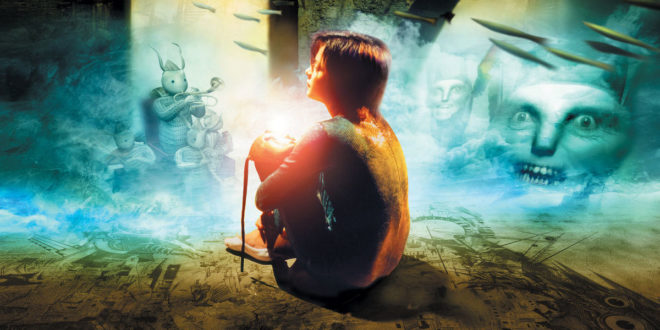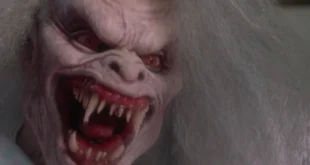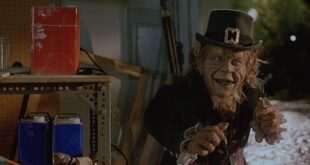“Eye-scorching screen candy.”
Mirrormask is a personal favorite film of mine, and with good reason. It’s all of that eye candy that left me begging for more! The film was created by two immensely gifted artists and storytellers, Neil Gaiman and Dave McKean, both of whom worked on the epic Sandman graphic novels together. They have created a mind-blowing film in Mirrormask, one that takes you into a realm that can only be woven in a world of fantasy.
So today, we delve deeper into this mesmerizing fantasy film, charting a new film territory that could possibly be the quintessential 21st century version of Alice in Wonderland.
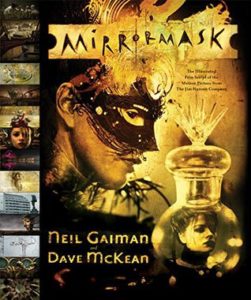
Mirrormask is about a fifteen-year-old girl going through life changing events. In order to deal with the reality of growing up and dealing with the mental strain of losing her mother, she escapes into a world of fantasy. One could say the girl is trapped in an alternative reality – this new reality being a metaphor for growing up and facing adult fears and tribulations. We’ve all escaped our “realities” at times…
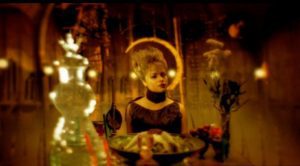
Mirrormask was directed by Dave McKean (Harry Potter and the Prisoner of Azkaban 2004). The story and teleplay was co-written by McKean and Neil Gaiman (American Gods TV series, Coraline 2009). It stars Stephanie Leonidas (American Gothic 2019), Jason Barry (Beyond Re-Animator 2003), and Rob Brydon (Lock, Stock and Two Smoking Barrels 1998).
Mirrormask is known for being the ultimate theatrical eye candy for art and film lovers alike. For those who know of McKean’s work, you’ll appreciate it in its lifelike form. The artwork is indeed incredible. The visual aspects evoked from Gaiman’s conceptual ideas are absolutely outlandish, dreamlike and spellbinding. The combination of CGI, animation, illustrations and cinematography involved in the creation of this film make for a tasty, mouthwatering dish.
Gaiman’s imagination and quirkiness are truly brought to life in this memorable dreamscape, treating the viewer to new findings upon reviewing. And I’ve watched Mirrormask dozens of times, and I notice something new in every viewing. My personal favorite out of the many strange and wondrous characters in the film is the Sphinx.
I find this film rather fascinating, as it deals with issues of the self and the duality of the mind, so to speak. Who knows what our “mirror selves” or “mirror’d world” reveal. As they say, the grass is never greener on the other side. Or is it..? Now there’s a thought to ponder.

Like any other movie, Mirrormask is not for everyone, but it is definitely a living creation in itself. The work of Gaiman is hypnotic and sets those dormant cells into action, waking the world of the unknown, flowing through the abyss of the mind. Combine that with the visuals of McKean, and you’ll have your imagination running wild… you’re surely in for a treat!
There are those who insist that this film is more of a work or style of art rather than a mere film, as it’s more visual than your typical bland movie, as there are so many hidden layers that need only be peeled away. With the influence of Neil Gaiman, you know that there are hidden meanings and psychological themes involved. His writing will undoubtedly leave you with food for thought, if not to question your own reality.

If you’re a fan of Neil Gaiman’s writing and storytelling, and you love the artwork by Dave McKean, Mirrormask is one not to be missed. It is an outstanding creation that will leave you breathless and glued to your seat, if only for the sheer, jaw dropping visuals and concepts. It truly is a beautiful piece of work with music that can only be described as a virtual symphony. All aspects of the film combine to create a gorgeous, phantasmagoric, whimsical, hypnotic delirium.
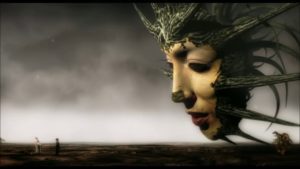
*SOME TRIVIA FOR YOU*
So be sure to watch Mirrormask and add the film to your collection. If you’ve seen it, let us know what you thought in the comments below!
 PopHorror Let's Get Scared
PopHorror Let's Get Scared
